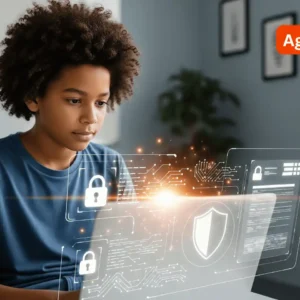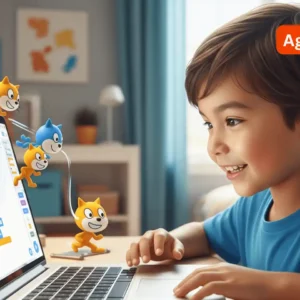Virtual Robotics for Kids: Code Smart Robots in VEXcode VR
per month
Courses Included
Description
Course Overview: Unleash Your Inner Engineer with Virtual Robots!
Ever dreamed of building and programming your own robot? Our “Virtual Robotics for Kids” course makes that dream a reality, right from your computer! Designed for young innovators (Grades 4-8), this engaging course dives into the exciting world of robotics for kids using VEXcode VR – a free, online simulation platform.
What You’ll Do:
- Design & Code: Learn to drag-and-drop code blocks (and even introductory Python!) to control virtual VEX robots.
- Navigate Challenges: Conquer mazes, build virtual structures, and solve complex missions in a fun, digital environment.
- Explore Sensors: Understand how robots “see” and “feel” their world using virtual bumper sensors, distance sensors, color sensors, and more.
- Problem-Solve Like a Pro: Develop critical computational thinking and problem-solving skills as you debug your code and refine robot behaviors.
Why This Course?
- No Physical Robot Needed! Learn robot programming without the need for expensive hardware. All you need is a computer and internet access.
- Beginner-Friendly: Perfect for kids with no prior coding experience. Start with intuitive block coding and gradually transition to text-based Python.
- Future-Ready Skills: Build foundational STEM for kids knowledge, preparing them for advanced coding, robotics, and engineering concepts.
- Engaging & Interactive: A dynamic, hands-on learning experience that keeps kids excited about technology.
Learning Outcomes: What You’ll Achieve
Upon completing this “Virtual Robotics for Kids” course, students will be able to:
1. Master VEXcode VR Interface & Setup:* Navigate the VEXcode VR online environment effectively. * Understand the layout of the coding workspace, robot playground, and dashboard.
2. Develop Core Robot Control Skills:* Program a virtual robot to move forward, backward, turn, and stop using precise commands. * Utilize a robot’s virtual motors and drivetrain for accurate navigation.
3. Apply Fundamental Programming Concepts:* Write sequential code to execute a series of robot actions. * Implement loops (e.g., for loops, while loops) for repetitive tasks. * Use conditional statements (if/else) to make robots respond to sensor data. * Create and call functions to organize and reuse code.
4. Integrate Sensor Data for Smart Robotics:* Read and interpret data from virtual bumper sensors, distance sensors, and color sensors. * Program robots to react intelligently to their environment based on sensor feedback.
5. Enhance Problem-Solving & Algorithmic Thinking:* Break down complex robotic challenges into smaller, manageable steps. * Debug code effectively to identify and fix errors in robot behavior. * Apply computational thinking principles to plan and execute robotic missions.
6. Build a Foundation for Advanced Robotics & Coding:* Gain confidence in block coding and be introduced to basic Python for robotics. * Understand the relationship between code and physical (virtual) robot behavior. * Be prepared to explore more complex robotics platforms and programming languages.
Additional information
| Select Class Type | One to One Personalized |
|---|





